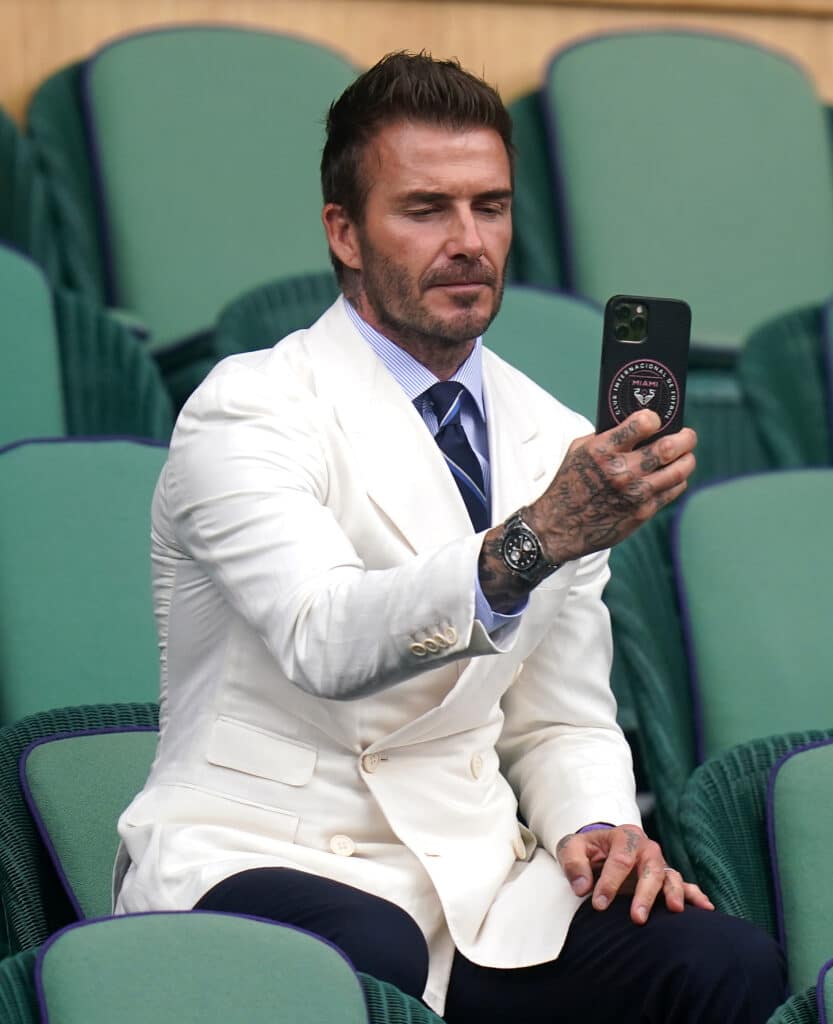
As the oldest and most prestigious tennis tournament in the world, Wimbledon has long been a symbol of tradition and excellence in the sport. Since its inception in 1877, the Championships have been held at the All England Club in London, drawing the finest tennis players from around the globe to compete on its iconic grass courts. Among the many traditions that set Wimbledon apart, the all-white dress code stands out as one of the most distinctive and enduring.
The all-white dress code, which requires all players from Novak Djokovic to Iga Swiatek to wear almost entirely white attire, has been a hallmark of Wimbledon since the 19th century. This rule is not merely a nod to the past but a reflection of the tournament’s commitment to maintaining its unique identity and upholding the values of sportsmanship and elegance. As we approach Wimbledon 2024, the question arises: Is the all-white dress code still relevant in today’s evolving sports landscape?
Wimbledon’s White Dress Code
The Origin and Evolution of Wimbledon’s All-White Dress Code
Wimbledon’s all-white dress code is one of the most iconic and enduring traditions in the world of sports. Its origins date back to the early years of the tournament, which began in 1877. At that time, tennis was primarily a social activity enjoyed by the British upper class, and the all-white attire was adopted to reflect the sport’s sophisticated nature and to mitigate the visibility of sweat stains, which were considered unseemly.
In the late 19th century, tennis was played predominantly by the British elite, and the sport was often associated with garden parties and social gatherings. The choice of white clothing was influenced by Victorian standards of propriety and cleanliness. White was seen as a symbol of purity and modesty, and it was believed to be more effective at concealing perspiration, which was deemed inappropriate to display in public. This emphasis on decorum and elegance set the tone for Wimbledon’s dress code, establishing a standard that would endure for over a century.

While the core principle of the all-white dress code has remained largely unchanged, there have been several revisions and clarifications over the years to address evolving fashion trends and player preferences. In the 1960s and 1970s, as tennis attire became more colorful and expressive, Wimbledon officials tightened the regulations to ensure compliance with the traditional all-white rule. In 1995, the All England Club issued a more detailed dress code, specifying that “white does not include off-white or cream” and that “a single trim of color around the neckline and around the cuff of the sleeves is acceptable.”
In recent years, the dress code has been further refined to address modern athletic wear and branding. For instance, in 2014, the rules were updated to stipulate that any non-white trim must be no wider than one centimeter. These adjustments reflect the tournament’s commitment to preserving its heritage while accommodating the practical needs of contemporary players.
Significance of the All-White Dress Code
The all-white dress code is a powerful symbol of Wimbledon’s heritage and its dedication to preserving the elegance and decorum that have defined the tournament since its inception. White attire evokes a sense of purity, simplicity, and timelessness, qualities that resonate with the values of sportsmanship and respect that Wimbledon seeks to uphold. By adhering to this tradition, players and organizers alike pay homage to the tournament’s storied past, creating a visual continuity that links each generation of competitors to those who came before them.
While the all-white dress code is steeped in tradition, it also has practical implications for player performance. White clothing is known for its ability to reflect heat, which can be particularly beneficial during the often sweltering conditions of a summer tournament. This can help players stay cooler and more comfortable on the court, potentially enhancing their performance. Additionally, the uniformity of the dress code eliminates any distractions related to fashion choices, allowing players to focus solely on their game. However, some players have expressed concerns that the strict dress code can be restrictive, limiting their ability to express individuality and personal style. Despite these concerns, many athletes embrace the tradition, recognizing that the all-white attire is an integral part of the Wimbledon experience.

Current ATP Ranking
Beyond its impact on the players, the all-white dress code holds significant cultural and social meaning. It serves as a visual representation of Wimbledon’s exclusivity and prestige, setting it apart from other tournaments that allow more relaxed dress codes. This distinction reinforces Wimbledon’s status as the pinnacle of tennis excellence, attracting fans and players who appreciate the tournament’s unique blend of tradition and modernity. The dress code also reflects broader societal values and norms, particularly those related to class and propriety. By maintaining this tradition, Wimbledon perpetuates a sense of continuity and stability in a rapidly changing world.

Notable Stories and Controversies
One of the most famous incidents occurred in 1985 when American tennis star Anne White took to the court wearing a white, full-body lycra bodysuit. While the outfit technically adhered to the all-white rule, it was deemed too unconventional by Wimbledon officials, who requested that she change into more traditional attire for her subsequent matches. The incident generated widespread media coverage and discussions about the balance between innovation and tradition in tennis attire.
In 2013, seven-time Wimbledon champion Roger Federer found himself at the center of a dress code controversy when he wore shoes with orange soles during his first-round match. Although the shoes were predominantly white, the bright orange soles were deemed to violate the dress code, and Federer was asked to change them for his next match. The incident highlighted the strict enforcement of the dress code and sparked conversations about the extent to which players should be allowed to incorporate personal style into their Wimbledon attire.
10 years ago…
— Tennis World (Mike) (@secondserves) July 4, 2023
Roger Federer’s shoes are banned from Wimbledon after his first round win against Hanescu
The defending champion wore white shoes with “big” orange details.
He wore “normal” shoes as he exited the tournament in R2 pic.twitter.com/qFhmqrAnBV
More recently, in 2017, Venus Williams faced scrutiny for wearing a pink sports bra that was visible through her white top. Wimbledon officials reminded her of the dress code, which stipulates that undergarments must also be white. Williams complied with the rules in her subsequent matches, but the incident once again brought the dress code into the spotlight, prompting discussions about its relevance and fairness.
Dress Code Violations and Penalties
Players’ responses to dress code violations have varied, ranging from compliance and acceptance to public criticism and calls for change. Many players, understanding the importance of tradition at Wimbledon, choose to comply with the rules without protest. For instance, Roger Federer and Venus Williams both adhered to the officials’ requests and adjusted their attire accordingly, demonstrating respect for the tournament’s regulations.
However, some players have expressed frustration and called for a reevaluation of the dress code. In 2017, after being asked to change her bra, Venus Williams commented on the challenges of adhering to such strict guidelines, particularly for female players. Similarly, other athletes have voiced concerns about the practicality and relevance of the all-white rule in modern tennis.
Despite these criticisms, many players also recognize the unique identity that the dress code brings to Wimbledon. For some, the tradition of wearing all white is seen as an integral part of the tournament’s charm and prestige. This duality of respect for tradition and the desire for modern flexibility continues to shape the dialogue around Wimbledon’s dress code.

Influence on Tennis Fashion
Historically, Wimbledon’s all-white dress code set the standard for tennis attire, influencing fashion trends both on and off the court. In the early years of the tournament, players wore long-sleeved shirts, trousers, and skirts made from heavy fabrics like flannel. These outfits, while elegant, were not particularly conducive to athletic performance. Over time, as the sport evolved and athletic demands increased, tennis fashion began to prioritize functionality and comfort.
By the 1920s and 1930s, players like Suzanne Lenglen and Fred Perry began to popularize more practical and stylish tennis attire. Lenglen, known for her flamboyant style, wore shorter skirts and sleeveless tops, while Perry introduced the classic polo shirt. Despite these innovations, the all-white rule remained a constant, ensuring that even as styles changed, the color palette stayed the same.

In the modern era, tennis fashion has continued to evolve, with advancements in fabric technology and design. Players now wear lightweight, moisture-wicking materials that enhance performance while adhering to the all-white dress code. The introduction of subtle design elements, such as textured fabrics and minimalistic trims, allows for a degree of personal expression within the confines of the rules.
Some players even have lucrative deals with luxury fashion houses, such as Jannik Sinner with Gucci and Matteo Berrettini with BOSS.
Jannik Sinner for Gucci✨ pic.twitter.com/Bf2C8Umqq8
— garçon (@boymolish) May 9, 2024
Player Experiences and Opinions
Wimbledon’s all-white dress code has historically sparked an array of opinions among players, a reflection of the evolving dialogue between tradition and modern expression in sports. Current players like Nick Kyrgios have voiced their frustration, citing restrictions on personal style and the practical issues of maintaining a pristine appearance on the court.
Here's what Nick Kyrgios’ Air Jordans mean to Wimbledon’s dress code: https://t.co/EeW1s3ObKW pic.twitter.com/dZSyZiRrHL
— Complex Sneakers (@ComplexSneakers) July 8, 2022
In contrast, legends such as Roger Federer have often embraced the tradition, appreciating its contribution to the unique atmosphere and prestige of the tournament. Serena Williams, known for her distinctive on-court fashion, has navigated this rule by adding subtle personal touches to her Wimbledon outfits that comply with the regulations yet showcase her personal style. This blend of respect for tradition and a push for individuality encapsulates the ongoing debate surrounding one of tennis’s oldest sartorial practices.
Public and Media Reaction
The public and media reaction to Wimbledon’s all-white dress code is varied and widely discussed, especially during the tournament season. Social media platforms light up with debates, with many fans applauding the tradition as a cornerstone of the Wimbledon identity, symbolizing the purity and discipline of the sport. Others critique it as outdated, arguing that it dampens players’ individuality and the sport’s contemporary appeal. Media analysis often reflects this division, with sports commentators and editorial pieces either defending the heritage or calling for a more relaxed and inclusive dress policy. The discourse reflects broader conversations about tradition and evolution in sports.
Comparing Dress Codes in Other Grand Slams
When examining dress codes across the four Grand Slam tournaments, Wimbledon stands out for its strict all-white policy. The Australian Open, French Open, and US Open allow players more freedom in their apparel choices, resulting in a broader palette of styles and colors that reflect the players’ personal brands and the more laid-back atmosphere of these events. This contrast is often highlighted in discussions about player expression and marketability, noting that while Wimbledon’s dress code enhances its distinguished aura, it may limit players’ ability to express themselves compared to other majors.

The Future of Wimbledon’s Dress Code
The future of Wimbledon’s dress code might hinge on finding a delicate balance between preserving its revered traditions and adapting to modern cultural shifts. Discussions about potential changes often consider minor relaxations that could allow personal expression without completely abandoning the all-white rule. Predictions about these changes are cautious, reflecting a respect for the tournament’s heritage while acknowledging the dynamic nature of contemporary sports culture. As generational shifts influence perceptions and expectations, Wimbledon may see a gradual evolution in its dress code to accommodate both its historical significance and a new era of tennis.
What is for sure is that the dress code will still exist for this year’s edition of Wimbledon, kicking off at the beginning of July. The Wimbledon schedule is due to come out shortly, once the ATP Rankings have been updated from the warm-up tournaments of Stuttgart and Queen’s. The latest news is that the Wimbledon prize money has been elevated so winning the Wimbledon Men’s or Women’s Final will now pocket £2.7m! Who’s going to be the lucky, talented players battling it out on Centre Court on July 14th…?
By Nicky Helfgott / @NickyH3lfgott on Twitter (X)
Keep up with all the latest Wimbledon scores and tennis matches today on the 365Scores website and app!



